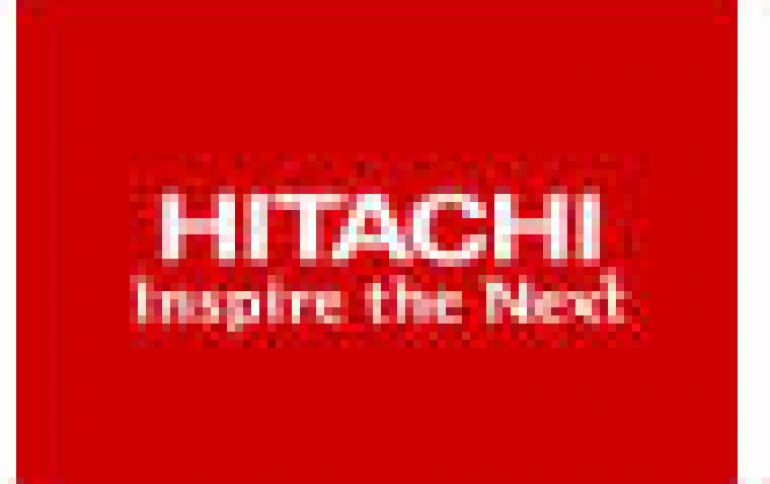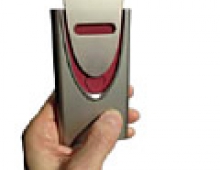
PC Drive Reaches 500GB
Hitachi's new Deskstar 7K500 drive it's the first desktop hard drive to reach 500GB and use the new SATA II interface.
As PC World reports...
In terms of how it stores data, though, the Deskstar may be among the last of its kind, as drive manufacturers begin to approach the limits of how densely they can pack data using today's standard recording technology.
Demand for greater capacity continues to rise due in large part to a growing need for music and video storage on PCs and consumer electronics devices. To meet that need, storage vendors are turning to new recording technologies. The first of these, perpendicular recording (see "How It Works: New Drive Technology" ), will debut from Toshiba this year.
Data Peak
Hitachi's 500GB drive will be available in two versions: a $500 drive featuring the older parallel ATA interface and an 8MB data buffer, and a $520 model with a 16MB buffer that uses the 3-gigabits-per-second Serial ATA II interface (which is backward-compatible with the 1.5-gbps SATA interface). Test units were not available at press time, but shipping versions should be ready in the second quarter of this year. Hitachi estimates that the five-platter 500GB drives will be able to store up to 56 hours of HDTV depending on compression rates.
The drive uses longitudinal recording, which writes data tracks in concentric circles using particles magnetized horizontally on the surface of the disk. Hard-drive vendors may be able to squeeze as much as 250GB per platter out of longitudinal recording (current drives fit from 100GB to 133GB on each platter). Desktop drive capacity will top out at around 1 terabyte by late 2006, before running into technological problems in maintaining data stability.
To get beyond such limitations, drive makers are moving to perpendicular recording, which magnetizes the particles vertically. Such drives should appear in desktops sometime in 2007, predicts John Buttress, research manager for hard disks at research firm IDC. And you won't need a new motherboard or a new adapter card to use the drives.
Toshiba will begin mass-producing the first perpendicular recording drives later this year. They won't go in your desktop PC. The new technology is slated for the IPod-size, 1.8-inch hard drives instead.
The company plans to offer two perpendicular recording drives: a 40GB model only 5mm thick (current models are 8mm thick) and an 80GB unit that should be the largest-capacity 1.8-inch hard drive to date. By comparison, Toshiba's current largest 1.8-inch model holds 30GB of data.
To read the entire article, click at the 'Source' icon!
In terms of how it stores data, though, the Deskstar may be among the last of its kind, as drive manufacturers begin to approach the limits of how densely they can pack data using today's standard recording technology.
Demand for greater capacity continues to rise due in large part to a growing need for music and video storage on PCs and consumer electronics devices. To meet that need, storage vendors are turning to new recording technologies. The first of these, perpendicular recording (see "How It Works: New Drive Technology" ), will debut from Toshiba this year.
Data Peak
Hitachi's 500GB drive will be available in two versions: a $500 drive featuring the older parallel ATA interface and an 8MB data buffer, and a $520 model with a 16MB buffer that uses the 3-gigabits-per-second Serial ATA II interface (which is backward-compatible with the 1.5-gbps SATA interface). Test units were not available at press time, but shipping versions should be ready in the second quarter of this year. Hitachi estimates that the five-platter 500GB drives will be able to store up to 56 hours of HDTV depending on compression rates.
The drive uses longitudinal recording, which writes data tracks in concentric circles using particles magnetized horizontally on the surface of the disk. Hard-drive vendors may be able to squeeze as much as 250GB per platter out of longitudinal recording (current drives fit from 100GB to 133GB on each platter). Desktop drive capacity will top out at around 1 terabyte by late 2006, before running into technological problems in maintaining data stability.
To get beyond such limitations, drive makers are moving to perpendicular recording, which magnetizes the particles vertically. Such drives should appear in desktops sometime in 2007, predicts John Buttress, research manager for hard disks at research firm IDC. And you won't need a new motherboard or a new adapter card to use the drives.
Toshiba will begin mass-producing the first perpendicular recording drives later this year. They won't go in your desktop PC. The new technology is slated for the IPod-size, 1.8-inch hard drives instead.
The company plans to offer two perpendicular recording drives: a 40GB model only 5mm thick (current models are 8mm thick) and an 80GB unit that should be the largest-capacity 1.8-inch hard drive to date. By comparison, Toshiba's current largest 1.8-inch model holds 30GB of data.
To read the entire article, click at the 'Source' icon!





















